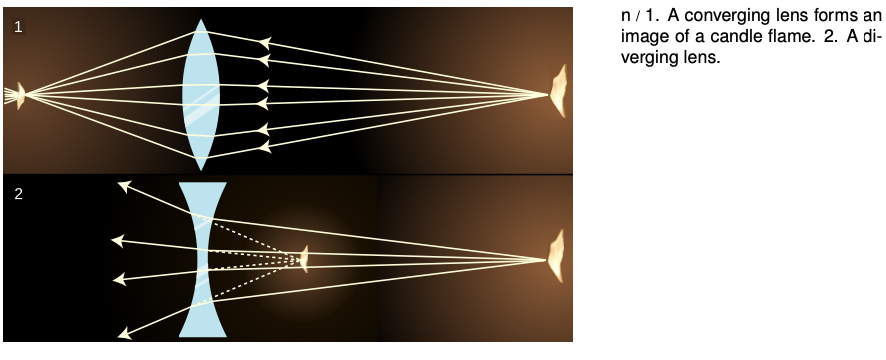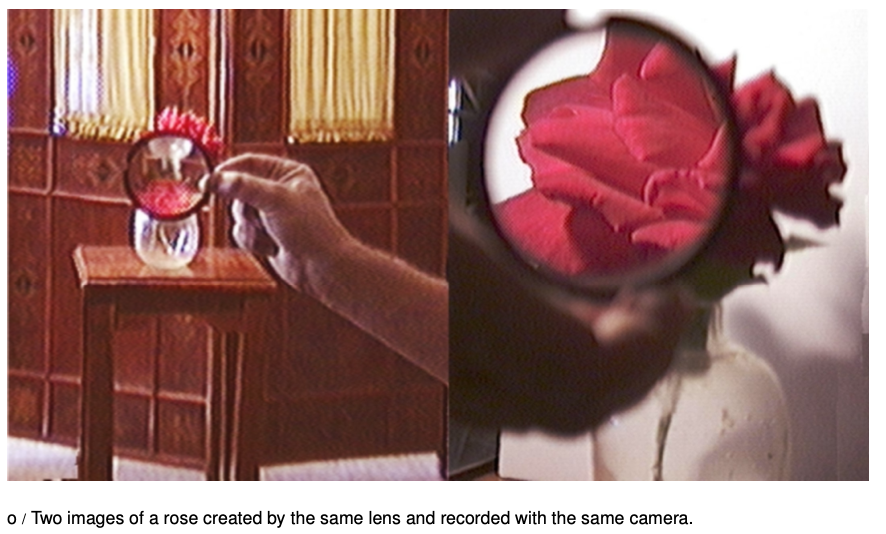LM 31.2 Lenses Collection
Tags | |
UUID | 1ef3e603-f145-11e9-8682-bc764e2038f2 |
31.2 Lenses by Benjamin Crowell, Light and Matter licensed under the Creative Commons Attribution-ShareAlike license.
31.2 Lenses
Figures n/1 and n/2 show examples of lenses forming images. There is essentially nothing for you to learn about imaging with lenses that is truly new. You already know how to construct and use ray diagrams, and you know about real and virtual images. The concept of the focal length of a lens is the same as for a curved mirror. The equations for locating images and determining magnifications are of the same form. It's really just a question of flexing your mental muscles on a few examples. The following self-checks and discussion questions will get you started.

self-check:
(1) In figures n/1 and n/2, classify the images as real or virtual.
(2) Glass has an index of refraction that is greater than that of air. Consider the topmost ray in figure n/1. Explain why the ray makes a slight left turn upon entering the lens, and another left turn when it exits.
(3) If the flame in figure n/2 was moved closer to the lens, what would happen to the location of the image?
(answer in the back of the PDF version of the book)
Discussion Questions
A In figures n/1 and n/2, the front and back surfaces are parallel to each other at the center of the lens. What will happen to a ray that enters near the center, but not necessarily along the axis of the lens? Draw a BIG ray diagram, and show a ray that comes from off axis.
In discussion questions B-F, don't draw ultra-detailed ray diagrams as in A.
B Suppose you wanted to change the setup in figure n/1 so that the location of the actual flame in the figure would instead be occupied by an image of a flame. Where would you have to move the candle to achieve this? What about in n/2?
C There are three qualitatively different types of image formation that can occur with lenses, of which figures n/1 and n/2 exhaust only two. Figure out what the third possibility is. Which of the three possibilities can result in a magnification greater than one? Cf. problem 4, p. 843.
D Classify the examples shown in figure o according to the types of images delineated in discussion question C.
E In figures n/1 and n/2, the only rays drawn were those that happened to enter the lenses. Discuss this in relation to figure o.
F In the right-hand side of figure o, the image viewed through the lens is in focus, but the side of the rose that sticks out from behind the lens is not. Why?

31.2 Lenses by Benjamin Crowell, Light and Matter licensed under the Creative Commons Attribution-ShareAlike license.
Calculators and Collections
- Comments
- Attachments
- Stats
No comments |
